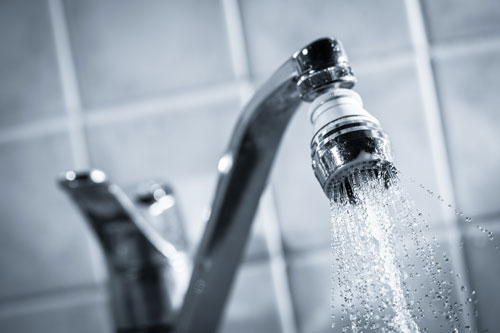Between growing populations and global warming, there are increasing concerns about having enough drinking water during dry periods. Taking measures to conserve water benefits the environment and your community. Here are some steps you can take to conserve water.
1. Check for leaks
A constant drip can waste several gallons of water each day, every day. That includes outdoor sprinkler and irrigation systems as well as indoor plumbing. And there may be slow leaks you can’t see. Take the time to look and listen for leaky plumbing throughout the home, and get any leaks fixed as soon as possible.
2. Use mulch
Over-watering of lawns and shrubs by many homeowners can be a huge waste of water. Be sure to water when it’s cool enough that you won’t lose water through evaporation. Lay down mulch or other organic waste around shrubs to absorb and retain water. Consider using soaker hoses and drip systems, as well as saving rainwater in barrels.
3. Add low-flow fixtures
Long showers may be wasting upwards of five gallons per minute. Install low-flow showerheads to minimize this. Also add aerators to faucets to reduce the amount of water coming through. Remind the family not to run water needlessly, such as while brushing teeth or doing dishes. When waiting for water to warm up, let it run into a bucket instead of down the drain. This could be used for cleaning, flushing, watering plants, and many other things.
4. Reduce Toilet flow
It can take 4 gallons of water on every flush. You may or may not have the budget to install an ultra low-flow toilet, but you can also get adjustable flaps to adjust the amount of water used, or float boosters to keep a lower water level. One simple idea is to place a bottle filled with pebbles in the flush tank. This reduces the amount of water needed to fill it.
5. Run full loads
Don’t use your dishwasher or washing machine for anything less than full loads. Even if you can adjust the water level, doing full loads is still more efficient. Avoid the habit of pre-rinse cycles on dishwashers and permanent press settings on clothes washes. If you can, upgrade these appliances to new versions that are much more efficient.
6. Conserve in the kitchen
Kitchen sinks are often big water-wasters. When doing dishes by hand, don’t rinse them under the faucet. Use a separate basin of fresh water for rinsing, and drain and refill it as needed. If you have a spray attachment, you should stack the soapy dishes in a dish rack and spray them down later. Also, shut off the water after rinsing food; don’t leave it running if you’re slicing and chopping instead of washing.
Water conservation at home is easy to do with a little planning. Follow these tips, get the household onboard with conservation efforts, and you’ll soon see a drop in your water usage.
Charlie Teschner started MESA Plumbing, Heating, and Cooling in 1982. Charlie has a journeyman and master plumber’s license. He was raised with a strong work ethic and he now applies those values to tasks such as Longmont, CO heating repair.



